Welcome to Jiangsu DZX Factory.
Email:dlx@dlx-alloy.com Mobile/Whatsapp:+86 199 0611 9641
Professional manufacturer of welding wires and spraying wires,over 22 years.
Welcome to Jiangsu DZX Factory.
Email:dlx@dlx-alloy.com Mobile/Whatsapp:+86 199 0611 9641
Professional manufacturer of welding wires and spraying wires,over 22 years.
Contact:Jason
Whatsapp:+8619906119641
Email:dlx@dlx-alloy.com
Add:NO.32 West Taihu Road, Xinbei District, Changzhou, Jiangsu,China
Copper Welding Wire
Product Details
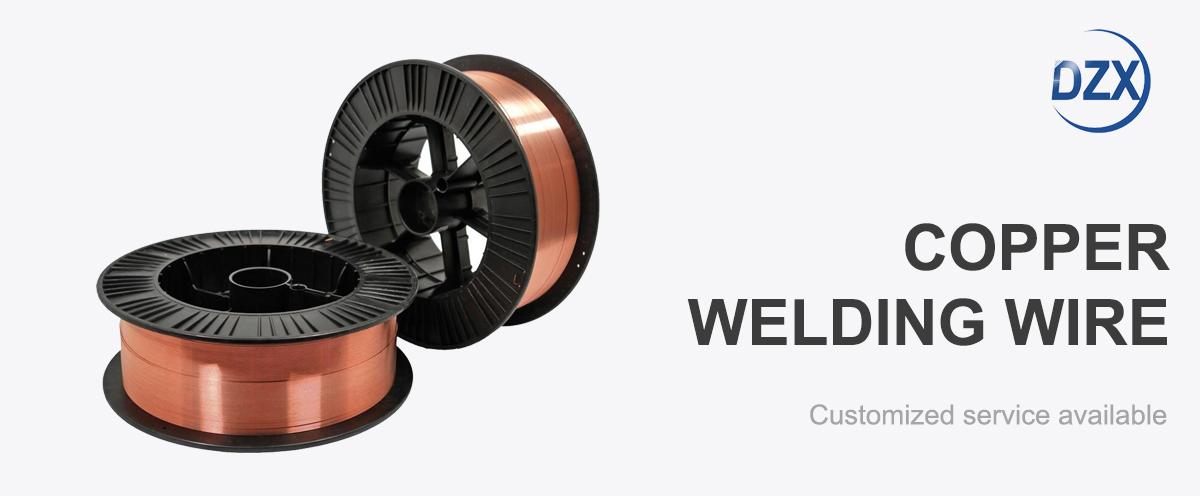
Our ERCuSn-C phosphor bronze welding wire is a tough, reliable choice for heavy-duty machinery joints. With about 7% tin and a copper base, this wire delivers strong, wear-resistant welds that can handle the toughest conditions. Designed for TIG and MIG welding, it offers a stable arc, low spatter, and smooth bead appearance. It’s perfect for joining bronze, brass, or copper components and for surfacing parts that face heavy wear, like gears or bearings. This wire is built to keep machinery running strong, no matter the load.
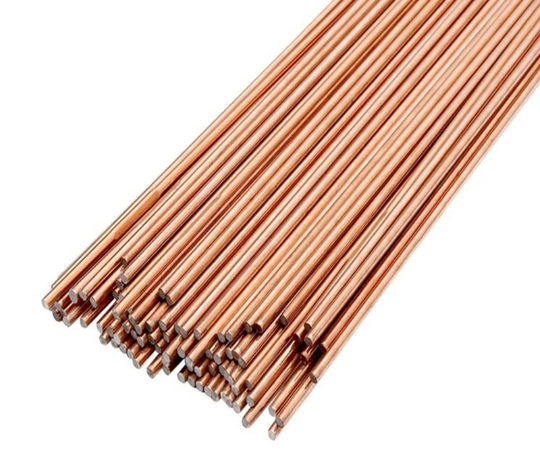
We’ve engineered our ERCuSn-C wire to shine in demanding applications. The high tin content boosts weld strength and wear resistance, with tensile strength around 50,000-60,000 psi, making it ideal for heavy machinery. It’s also corrosion-resistant, holding up well in moist or mildly acidic environments, which is great for industrial settings. The wire’s smooth flow ensures clean welds with minimal cleanup, whether you’re repairing a worn shaft or building a new component. It’s versatile, durable, and easy to work with for both manual and automated setups.
For more other size details, pls directly contact us
The copper-based welding wire market is on an upward swing, expected to hit USD 4.5 billion by 2030 with a 5.5% CAGR. Heavy industries like manufacturing, mining, and construction are driving demand for durable, wear-resistant materials. Phosphor bronze wires like ERCuSn-C are prized for their strength and ability to extend the life of machinery components. As automation and heavy equipment production grow, the need for reliable welding solutions that can handle high stress and wear is bigger than ever, and our wire is up to the challenge.
Our ERCuSn-C wire is a workhorse for heavy machinery welding. It’s used for joining bronze and brass components in construction equipment, mining machinery, and industrial gears. The wire’s wear resistance makes it perfect for surfacing parts like bearings, bushings, and propeller shafts that face constant friction. It’s also great for repairing worn machinery, extending service life and cutting downtime. In marine and industrial settings, its corrosion resistance ensures welds stay strong even in tough, wet conditions.
| AWS Classification | Applications |
| ERNiCr-3 | Used for welding 600, 601, and 800 alloys and dissimilar welding between stainless steel and carbon steel |
| ERNiCrFe-7 | Suitable for welding nickel-chromium-iron alloys under ASTM B163, B166, B167, and B168 standards |
| ERNiCrFe-6 | Designed for welding steel to nickel-chromium-iron alloys, as well as stainless steel to nickel-based alloys |
| ERNiCrCoMo-1 | Used for welding nickel-chromium-cobalt-molybdenum alloys and various high-temperature alloys |
| ERNiCrMo-3 | Suitable for nickel alloy, carbon steel, stainless steel, and low alloy steel welding, primarily used for 625, 601, 802 alloys, and 9% nickel alloys |
| ERNi-CI | Used for welding commercially pure nickel, malleable cast iron, and gray cast iron |
| ERCuNi | Suitable for welding 70/30, 80/20, and 90/10 copper-nickel alloys |
| ERNiCu-7 | Used for welding nickel-copper alloys such as B127, B163, B164, and B165 |
| ERNi-1 | Designed for welding pure nickel castings and forgings, including those under ASTM B160, B161, B162, and B163 standards |
| ERNiFeMn-CI | Suitable for welding nodular cast iron, ductile iron, malleable cast iron, and gray cast iron, as well as their dissimilar welding to stainless steel, carbon steel, low alloy steel, and various nickel alloys |
| ERNiCrMo-4 | Used for welding nickel-chromium-molybdenum alloys, or for welding nickel-chromium-molybdenum alloys to steel and other nickel-based alloys |
| ERNiCrMo-11 | uitable for self-welding nickel-chromium-molybdenum alloys, dissimilar welding with steel and other nickel alloys, and also for cladding applications |
| ERNiCrMo-13 | Used for welding low-carbon nickel-chromium-molybdenum alloys |
| ENiCrMo-3 | Designed for welding nickel-chromium-molybdenum alloys, including 625, 800, 801, 825, and 600 |
| ENiCrFe-3 | Used for welding nickel-chromium-iron alloys and for dissimilar welding with carbon steel |
| ENiCrFe-2 | Suitable for welding austenitic steel, ferritic steel, and high-nickel alloys, also used for 9% nickel alloy welding |
| ENiCu-7 | Primarily used for welding nickel-copper alloys and their dissimilar welding with steel |
| ENiCrFe-7 | Ideal for welding 690 (UNS N06690) nickel-chromium-iron alloys |
| ENiCrMo-4 | Designed for C-276 alloy welding and most nickel-based alloys |
| ENiCrCoMo-1 | Suitable for welding nickel-chromium-cobalt-molybdenum alloys and various high-temperature alloys |
| ERCuNi | Used for welding forged or cast 70/30, 80/20, and 90/10 copper-nickel alloys |
| ENiCrMo-13 | Used for welding low-carbon nickel-chromium-molybdenum alloys |
| ENiCrMo-11 | Used for welding low-carbon nickel-chromium-molybdenum alloys |
| Welding Wire Type | Density (g/cm³) | Melting Point (°C) | Electrical Conductivity (% IACS) | Coefficient of Thermal Expansion (10⁻⁶/°C) | Tensile Strength (MPa) | Yield Strength (MPa) | Elongation at Break (%) |
| Carbon Steel Welding Wire | 7.85 | 1450 | 8-10 | 11.8 | 400-550 | 300-400 | 20-25 |
| Stainless Steel Welding Wire | 7.9 | 1350-1450 | 2-5 | 16-17 | 550-650 | 300-400 | 30-40 |
| Aluminum Welding Wire | 2.7 | 600-660 | >60 | 23.1 | 150-200 | 75-100 | >20 |
| Nickel Alloy Welding Wire | 8.4 | 1350-1400 | 1-2 | 13.1 | 600-800 | 400-600 | 30-40 |
| Welding Rod Type | Coating | Electrical Resistivity (10⁻⁶ Ω·cm) | Hardness (HV) | Heat Resistance (°C) | Tensile Strength (MPa) | Yield Strength (MPa) | Elongation at Break (%) |
| Carbon Steel Welding Rod | Acid coated, alkaline coated | 10-15 | 150-200 | < 450 | 400-550 | 300-400 | 20-25 |
| Stainless Steel Welding Rod | Acid coated, alkaline coated | 60-80 | 200-400 | < 800 | 550-750 | 350-450 | 25-35 |
| Cast Iron Welding Rod | Alkaline coated | 90-120 | 250-450 | 300-600 | 300-500 | 150-300 | 10-20 |
| Nickel Alloy Welding Rod | Alkaline coated | 80-100 | 200-300 | < 1200 | 700-900 | 450-650 | 20-35 |
For more other size details, pls directly contact us
Durability and sustainability are shaping the welding world. Industries want materials that reduce maintenance and keep equipment running longer, and our ERCuSn-C wire delivers with its wear and corrosion resistance. Automated welding is gaining ground in heavy industry, and our wire’s consistent feed and stable arc make it a top pick for robotic systems. Stricter safety and performance standards are also pushing demand for high-quality welding materials that can handle extreme conditions, and our wire meets those standards head-on.
Here’s how our ERCuSn-C stacks up against other copper-based welding wires:
Parameter | ERCuSn-C (Ours) | ERCu | ERCuSi-A | ERCuAl-A1 |
|---|---|---|---|---|
Composition | ~7% Tin | Pure copper | ~3% Silicon | ~6-8% Aluminum |
Wear Resistance | Excellent (High tin content) | Moderate | Moderate | Excellent (Aluminum-enhanced) |
Primary Use | Bronze, brass, surfacing | Pure copper | Copper, galvanized steel | Aluminum bronze, surfacing |
Machinery Suitability | High (Heavy-duty joints) | Low (Less durable) | Moderate (Milder applications) | High (Wear-focused) |
Weldability | Excellent (Stable arc, low spatter) | Good (Higher spatter risk) | Excellent (Smooth arc) | Excellent (Smooth arc) |
Tensile Strength (psi) | ~50,000-60,000 | ~30,000-40,000 | ~50,000 | ~60,000-70,000 |
Corrosion Resistance | Good (Moist, industrial settings) | Moderate (General) | Good (Mild environments) | Excellent (Chemical, cavitation) |
Cost-Effectiveness | High (Durable, versatile) | High (For copper) | High (For specific uses) | High (Specialized applications) |
Our ERCuSn-C is the go-to for heavy-duty machinery, offering top-notch wear resistance and strength.
We take pride in our ERCuSn-C wire, crafted to meet AWS A5.7 standards with high-purity materials for clean, reliable welds. Our manufacturing process eliminates defects, ensuring smooth feeding in TIG and MIG setups, whether manual or automated. Available in various diameters and spool sizes, it’s designed to fit your project’s needs, from small repairs to large-scale machinery builds. Our team’s always ready with expert advice to help you get the strongest, most durable welds possible.
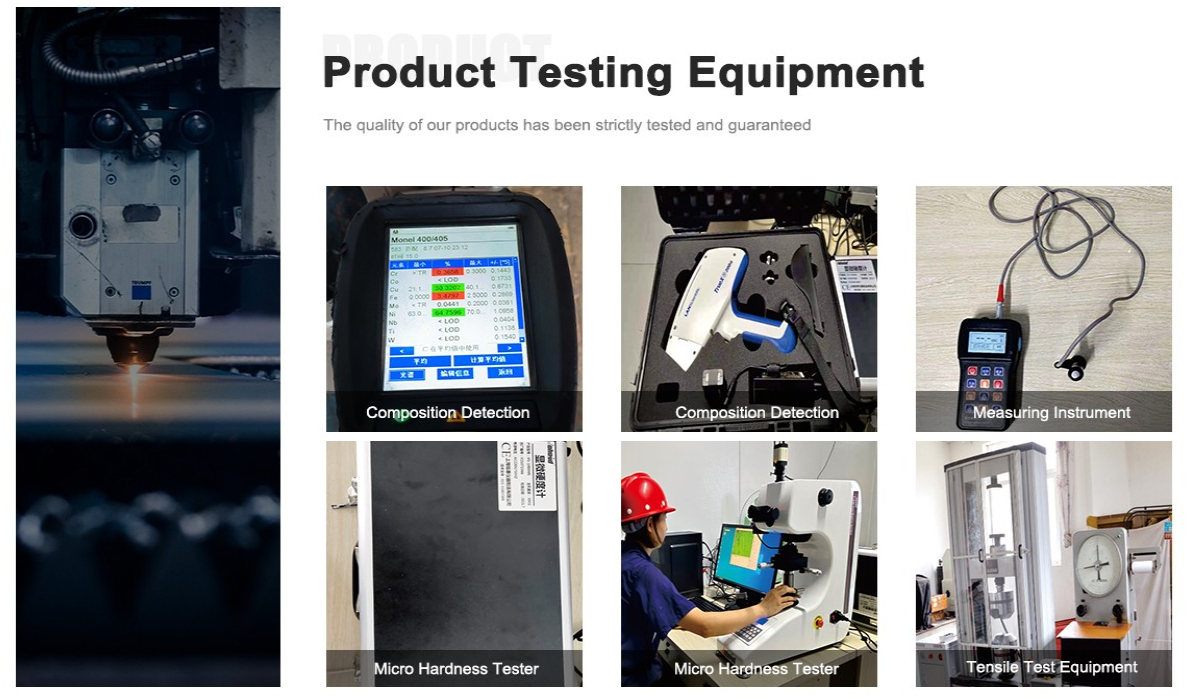
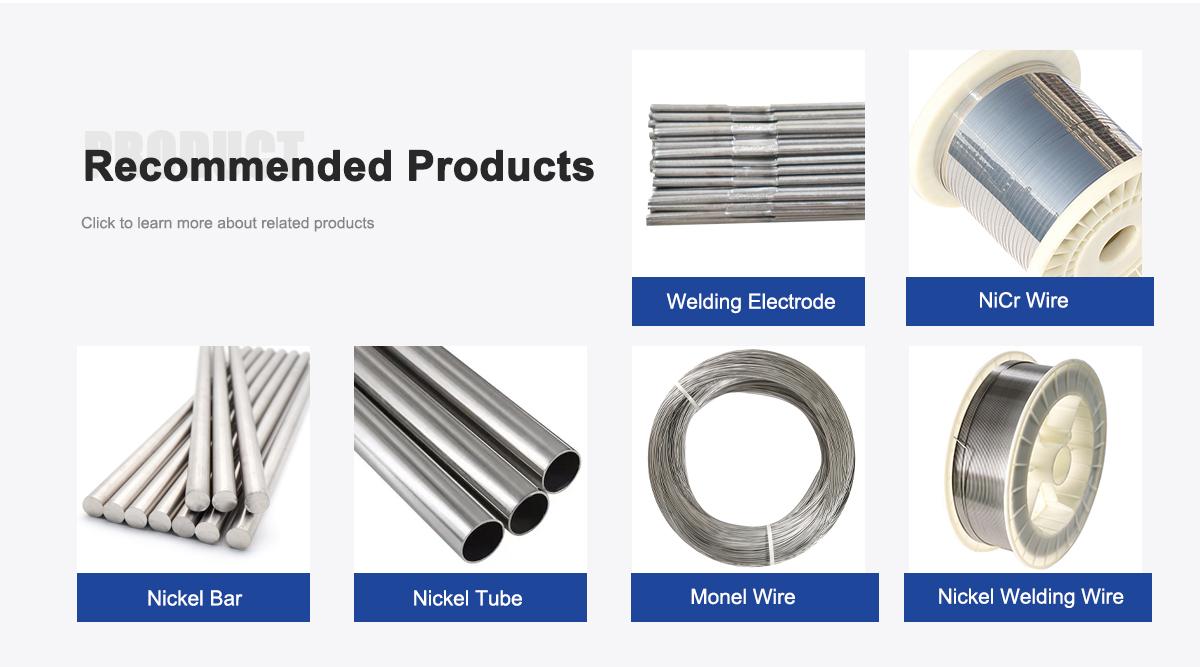
About Us:
Our 12,000㎡ factory is equipped with complete capabilities for research, production, testing, and packaging. We strictly adhere to ISO 9001 standards in our production processes, with an annual output of 1,200 tons. This ensures that we meet both quantity and quality demands. Furthermore, all products undergo rigorous simulated environment testing including high temperature, high pressure, and corrosion tests before being dispatched, ensuring they meet customer specifications. We also provide chemical analysis reports for every FeCrAl alloy, NiCr alloy, and other products purchased.
For all our clients, we offer timely and multilingual after-sales support and technical consulting, helping you resolve any issues swiftly and efficiently.
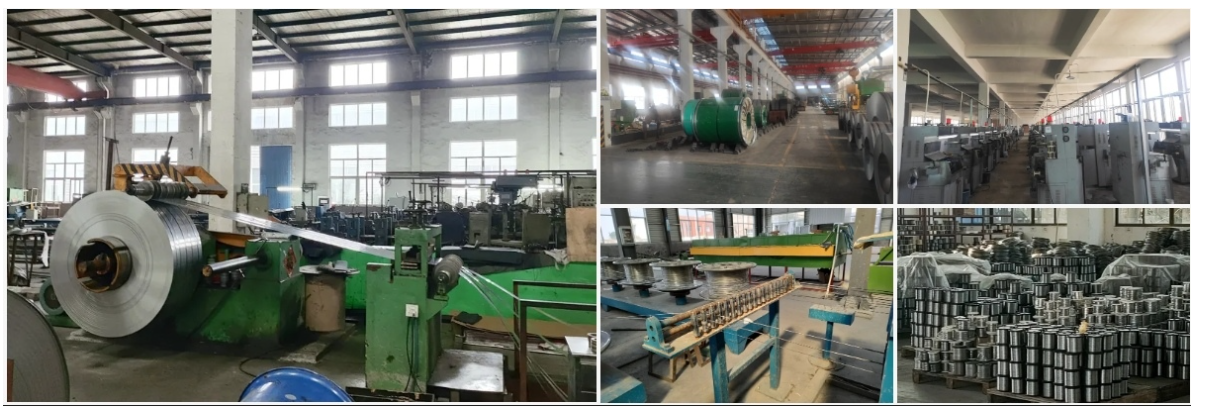
Client Visits
Building Stronger Partnerships
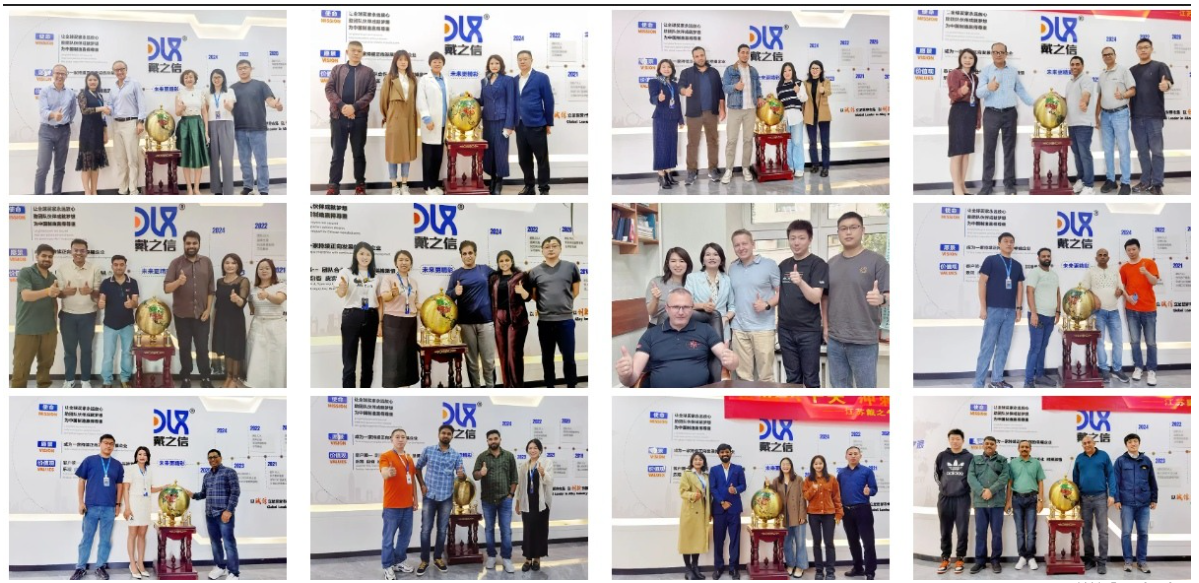
We support all kinds of testing:
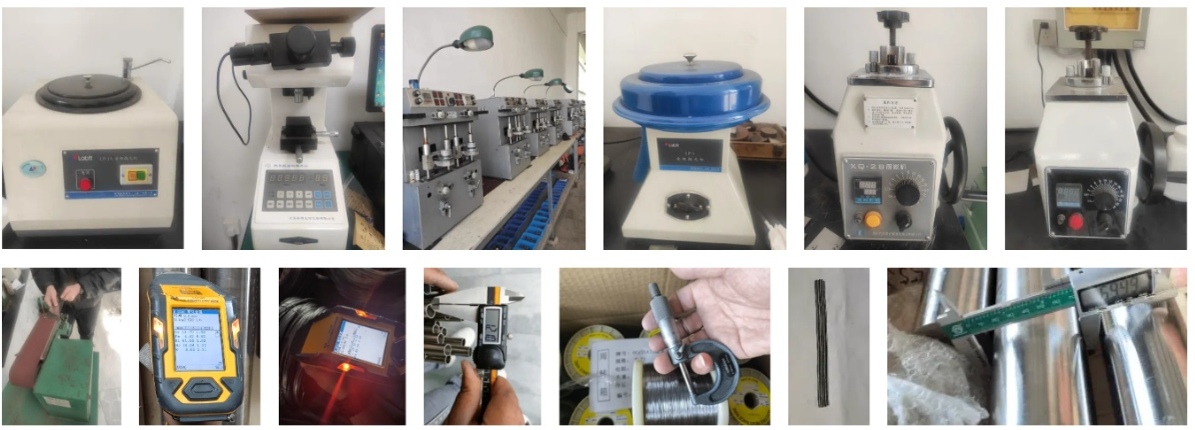

What makes ERCuSn-C ideal for heavy machinery?
Its 7% tin content ensures high wear resistance and strong welds for gears, bearings, and shafts.
Can ERCuSn-C weld dissimilar metals?
Yes, it’s great for joining bronze or brass to copper or steel with durable welds.
What industries use ERCuSn-C wire?
Manufacturing, mining, construction, and marine for wear-resistant machinery welds.
How does ERCuSn-C compare to ERCuSi-A?
ERCuSn-C offers better wear resistance for heavy machinery, while ERCuSi-A suits plumbing and HVAC.
Is ERCuSn-C suitable for surfacing applications?
Absolutely, its hardness makes it perfect for overlaying worn parts like bearings and bushings.
What shielding gas works best with ERCuSn-C?
Pure argon at 15-20L/min is ideal for TIG welding to ensure clean, stable welds.
Can ERCuSn-C be used in automated welding?
Yes, its smooth feed and stable arc make it a great fit for robotic welding systems.
Why choose ERCuSn-C over ERCuAl-A1?
ERCuSn-C excels in wear resistance for machinery, while ERCuAl-A1 is better for chemical corrosion resistance.
Our ERCuSn-C phosphor bronze welding wire is a must-have for heavy-duty machinery joints. Its wear resistance, strength, and corrosion resistance make it perfect for gears, bearings, and industrial repairs. With trends leaning toward durability and automation, our wire keeps you ahead of the pack. Choose us for quality, reliability, and welds that keep your machinery running strong.
Previous article:Oxygen-Free ERCu Wire for High-Performance Electronics Welding
Next article:ERCuSn-A Phosphor Bronze Wire for Robust Shipbuilding Repairs